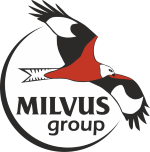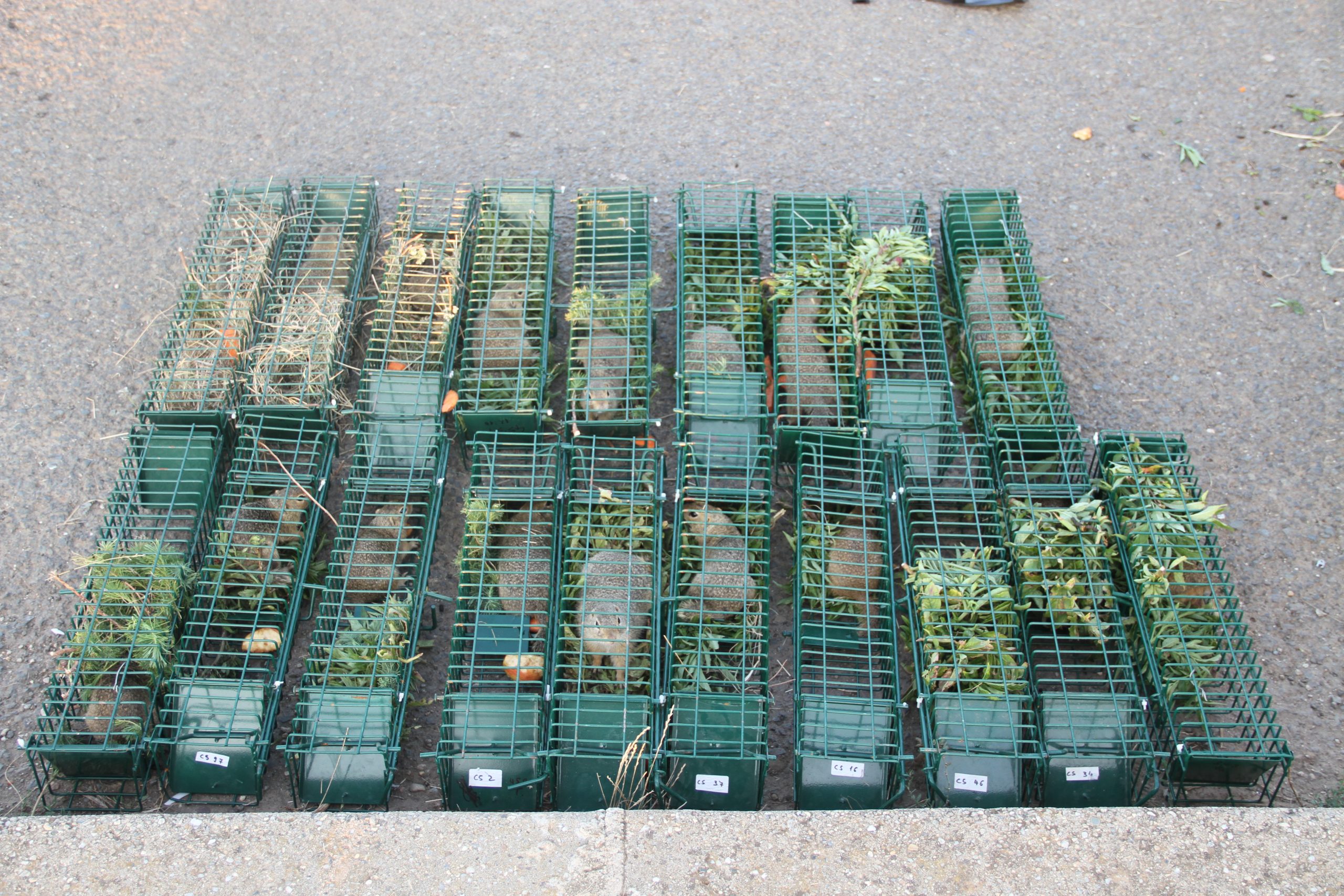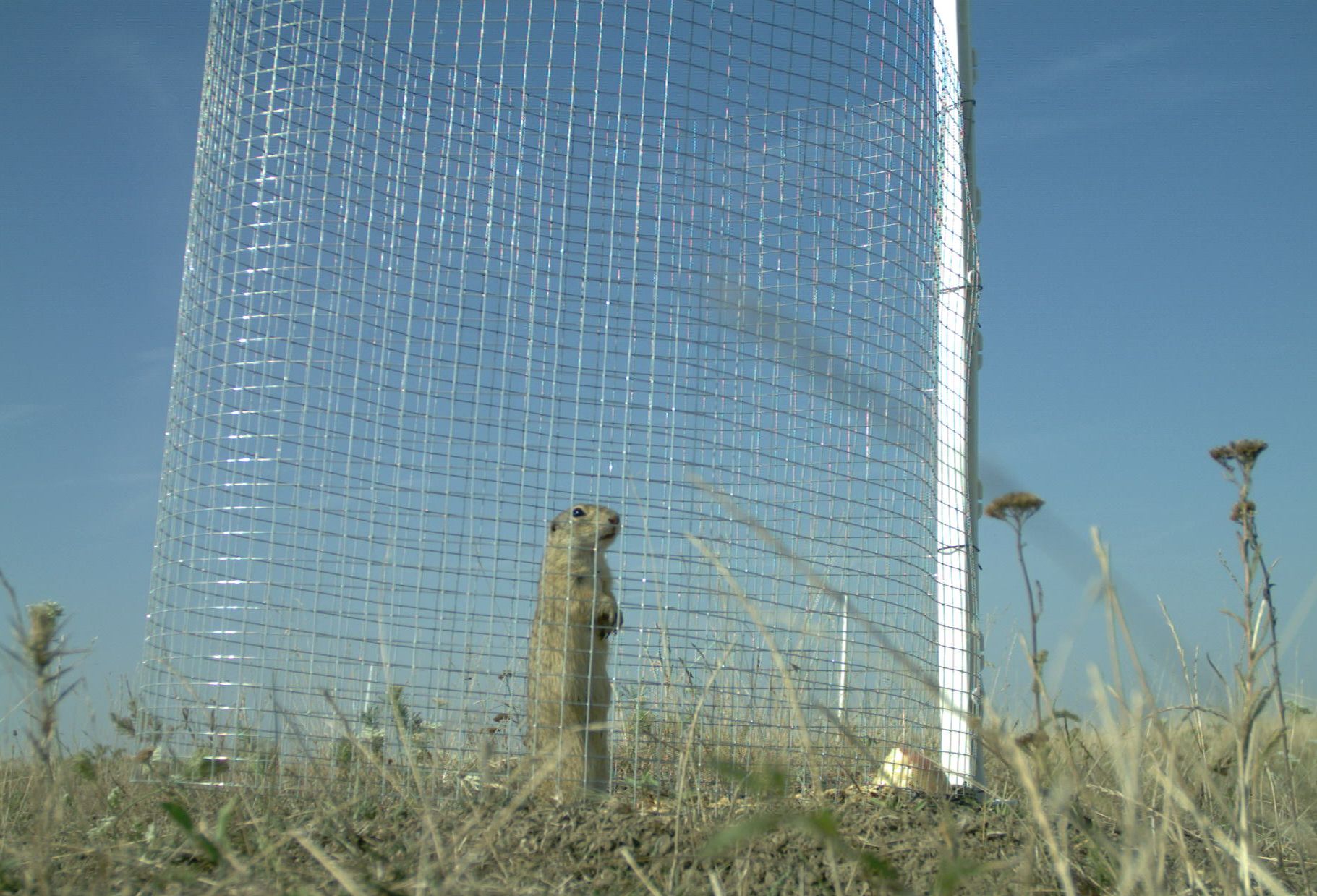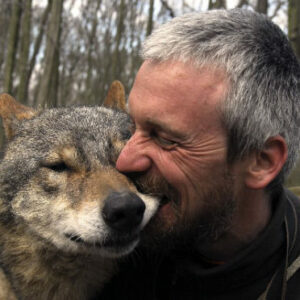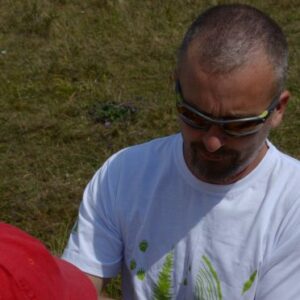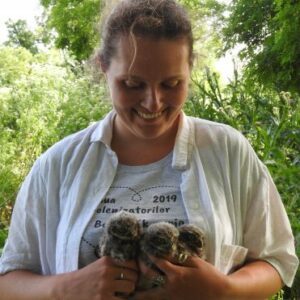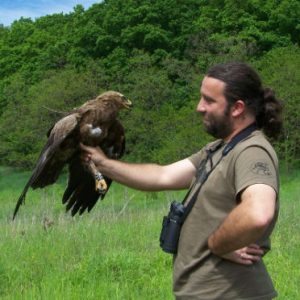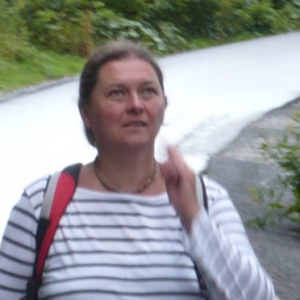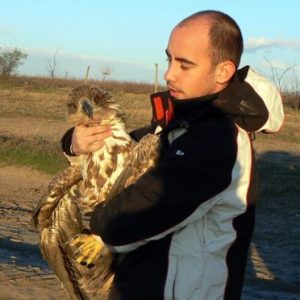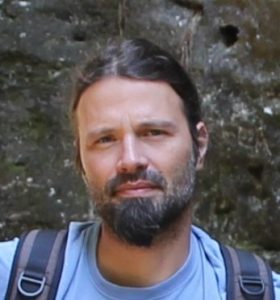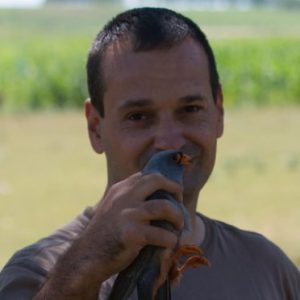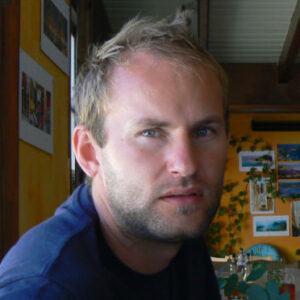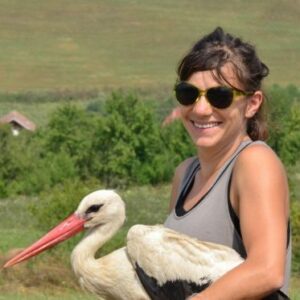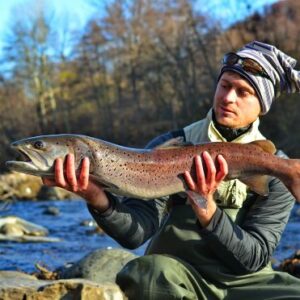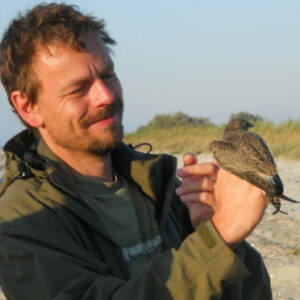 The European Ground Squirrel (Spermophilus citellus), a rodent which has become endangered in most parts of its distribution area, has drawn our attention over a decade ago and has since become one of our most intensely studied species. As a typical mammal of the steppe, it prefers grasslands with short vegetation from the plain regions. The destruction of these habitats caused by ploughing up and infrastructure development, as well as their bad management practises put considerable pressure on the ground squirrel populations. Over the years, we carried out successfully the distribution mapping of this species within Romania by locating a substantial part of its existing habitats. Based on data collected from different regions of Romania, we have significantly increased the number of Natura 2000 protected areas designated for the conservation of the ground squirrel. Since 2011 , we have been regularly conducting ground squirrel monitoring and conservation activities in the western part of the country (the Pannonian Biogeographical Region), among other things, by relocating ground squirrels from some habitats facing threats. These activities played also a key role in our efforts to conserve the Saker Falcon (Falco cherrug). Such actions are continued also within the international project “Securing prey sources for endangered Falco cherrug and Aquila heliaca population in the Carpathian basin (RAPTORSPREYLIFE)”, co-financed by the LIFE+ program of the European Union. The important activities within this project include the introduction of new individuals for the revitalization of declining colonies, the genetic comparison of different colonies and the restoration of degraded grasslands by mowing, as well as various awareness-raising and educational activities. Over the past years, we have regularly collaborated with a group of researchers studying ground squirrels in Moldova, eastern Romania. We are constantly fighting against the illegal destruction of pastures and we also want to encourage farmers to ensure appropriate habitat management for this rodent by a proposed new agri-environmental scheme.
The European Ground Squirrel (Spermophilus citellus), a rodent which has become endangered in most parts of its distribution area, has drawn our attention over a decade ago and has since become one of our most intensely studied species. As a typical mammal of the steppe, it prefers grasslands with short vegetation from the plain regions. The destruction of these habitats caused by ploughing up and infrastructure development, as well as their bad management practises put considerable pressure on the ground squirrel populations. Over the years, we carried out successfully the distribution mapping of this species within Romania by locating a substantial part of its existing habitats. Based on data collected from different regions of Romania, we have significantly increased the number of Natura 2000 protected areas designated for the conservation of the ground squirrel. Since 2011 , we have been regularly conducting ground squirrel monitoring and conservation activities in the western part of the country (the Pannonian Biogeographical Region), among other things, by relocating ground squirrels from some habitats facing threats. These activities played also a key role in our efforts to conserve the Saker Falcon (Falco cherrug). Such actions are continued also within the international project “Securing prey sources for endangered Falco cherrug and Aquila heliaca population in the Carpathian basin (RAPTORSPREYLIFE)”, co-financed by the LIFE+ program of the European Union. The important activities within this project include the introduction of new individuals for the revitalization of declining colonies, the genetic comparison of different colonies and the restoration of degraded grasslands by mowing, as well as various awareness-raising and educational activities. Over the past years, we have regularly collaborated with a group of researchers studying ground squirrels in Moldova, eastern Romania. We are constantly fighting against the illegal destruction of pastures and we also want to encourage farmers to ensure appropriate habitat management for this rodent by a proposed new agri-environmental scheme.
Publications:
Kecskés A., Hegyeli Zs., Latková H., Sos T., Nagy A. A., Domokos Cs., Aczél-Fridrich Zs., Mezey Zs., Sugár Sz., Papp T. 2012. Emlősfajok védelme a Natura 2000 hálózat segítségével Romániában. Babeș-Bolyai Tudományegyetem, Biológia és Geológia Kar – Apáthy István Egyesület. 13. Kolozsvári Biológus Napok. Kolozsvár, 2012 március 30-31.
Hegyeli Zs., Nagy A., Daróczi J. Sz., Kecskés A., Latková H. 2012. Current distribution and status of the European ground squirrel in Romania. IV European Ground Squirrel Meeting, 5-7 September 2012, Kamień Śląski, Poland.
Hegyeli, Zs., Bóné, G., Fülöp, T., Nagy, A. 2014. Vulnerability of European ground squirrel colonies in the Pannonian region of Romania. 5th European Ground Squirrel Meeting, Perspectives on an endangered species. Rust, Austria, 02-05 October 2014.
Petráss, I. A., Hegyeli, Zs. 2013. Studiu de evaluare a impactului repatrierii Spermophilus citellus. Activitatea C3 LIFE09 NAT/HU/000384. Raport, 27 pp.
Fülöp, T., Hegyeli, Zs. 2016. Pest control companies as threats to European ground squirrel (Spermophilus citellus) and common hamster (Cricetus cricetus) populations in Romania. 6th European Ground Squirrel Meeting. Belgrade, Serbia, 4–6 November 2016.
Baltag, E. Ș., Fülöp, T., Zaharia, G., Petrencu, L., Hegyeli, Zs. 2016. Distribution modeling of European Ground Squirrel (Spermophilus citellus) population from Romania. 6th European Ground Squirrel Meeting. Belgrade, Serbia, 4–6 November 2016.
